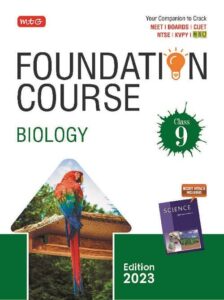
We have provided summary notes and revision materials specifically designed for students studying in Class 9. These resources include CBSE Key Notes, CBSE Revision Notes, and Short Key summary Notes. These notes cover the entire Chapter 1 titled “Matter in Our Surroundings” of the Science textbook prescribed by NCERT for Class 9. If you are using the NCERT Textbook or other CBSE Books for class 9 to study Science, these notes will be helpful for you. They are a consolidated source of information that can be used for memorization after learning the lesson. Check these comprehensive Class 9 notes for Chapter 1 Matter in Our Surroundings to enhance your understanding and facilitate effective studying.
Important – Matter in Our Surroundings Class 9 MCQ
CBSE Class 9 Science Notes Chapter 1 Matter in Our Surroundings
Physical Nature of Matter
– Matter is made up of particles, which are extremely small and cannot be seen with the naked eye.
– The particles of matter are continuously moving.
Characteristics of Particles of Matter
– There is space between particles of matter, which allows them to move freely.
– Particles of matter attract each other, resulting in the force of attraction between them.
States of Matter
– Matter exists in three states: solid, liquid, and gas.
– In the solid state, particles are tightly packed and have a fixed shape and volume.
– In the liquid state, particles are close together but can move and take the shape of the container they are in. They have a definite volume.
– In the gaseous state, particles are far apart and move freely. They do not have a fixed shape or volume.
Updated Class 9 syllabus – CBSE Syllabus for Class 9 (2023-24)
Effect of Change of Temperature
– Changing the temperature of matter can cause it to change its state.
– Increasing the temperature can change a solid to a liquid and a liquid to a gas.
– Decreasing the temperature can change a gas to a liquid and a liquid to a solid.
Can Matter Change its State?
– Yes, matter can change its state depending on the temperature and pressure conditions.
Effect of Change of Pressure
– Changing the pressure can also cause matter to change its state.
– Increasing the pressure can change a gas to a liquid and a liquid to a solid.
– Decreasing the pressure can change a solid to a gas and a liquid to a gas.
In case you don’t know – Class 9 Deleted Syllabus 2023-24
Evaporation
– Evaporation is the process by which a liquid changes into a gas.
– Factors affecting evaporation include temperature, surface area, and humidity.
Factors Affecting Evaporation
– Higher temperatures increase the rate of evaporation.
– Increasing the surface area of the liquid also increases the rate of evaporation.
– Higher humidity decreases the rate of evaporation.
How Does Evaporation Cause Cooling?
– During evaporation, the particles of the liquid gain energy from the surroundings to change into a gas, causing the surroundings to cool down. This is why we feel cool when a wet surface evaporates.
Have you checked this yet? – MTG Monthly Magazines for Making NEET/JEE/CBSE/CUET Preparation Extraordinary!
| We believe that the provided CBSE Class 9 Science Notes Chapter 1 Matter in Our Surroundings will be helpful for students studying in class 9. If you want answers to NCERT Questions, MTGs NCERT Text Book+Exemplar Problems-Solutions Science Class 9 is the solution. If you have any questions or concerns about the NCERT Class 9 Science Notes Chapter 1 Matter in Our Surroundings, please leave a comment below and we will respond as soon as possible. | 
|
Recommended Class 9 Science Books

|

|

|
































